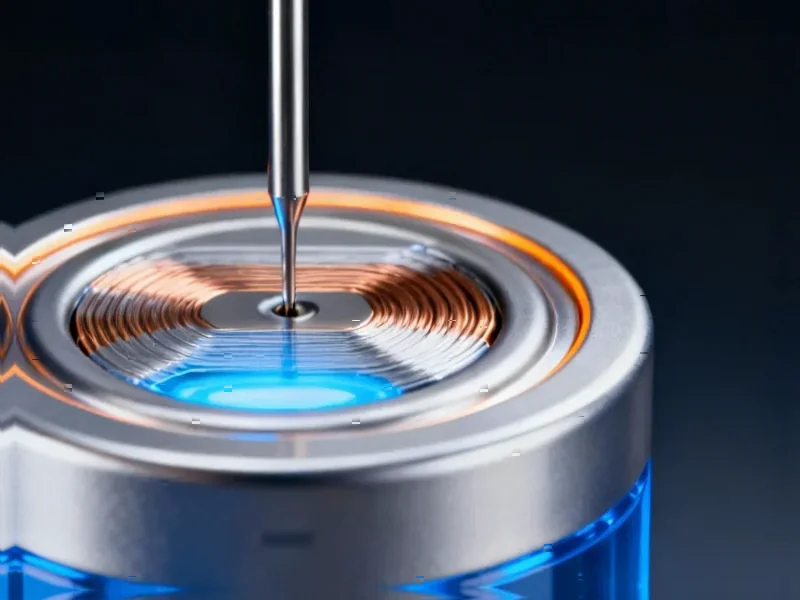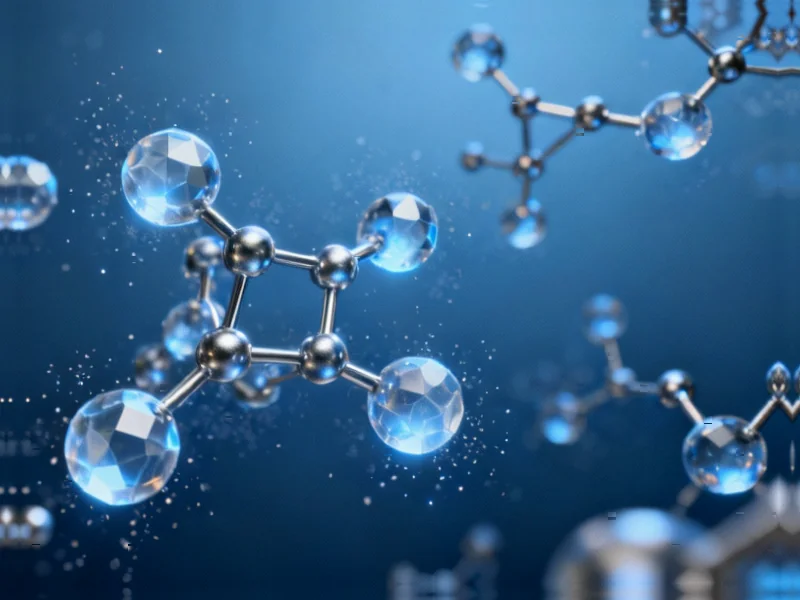According to Nature, researchers are using in situ electrochemical transmission electron microscopy to characterize the solid-electrolyte interphase (SEI) layer in lithium-ion batteries, enabling real-time observation of morphology, composition, and electrical properties. The technique reveals how electron leakage current through the SEI indicates its ability to resist side reactions that degrade battery performance over time. This approach provides unprecedented insights into a critical battery component that has long eluded comprehensive analysis.
Table of Contents
Understanding the Solid-Electrolyte Interphase
The solid-electrolyte interphase represents one of the most crucial yet least understood components in modern lithium-ion battery technology. This nanometer-thin layer forms spontaneously during the first charging cycles between the anode and electrolyte, serving as a protective barrier that enables selective ion transport while preventing continuous electrolyte decomposition. The SEI’s effectiveness directly determines battery lifespan, safety, and performance retention. What makes the SEI particularly challenging to study is its dynamic nature – it evolves throughout the battery’s lifetime, responding to temperature changes, charge rates, and aging effects. Traditional post-mortem analysis methods destroy this delicate structure, making real-time observation essential for understanding its true behavior.
Critical Analysis of the TEM Approach
While in situ electrochemical TEM represents a significant methodological advancement, several practical challenges remain unaddressed. The technique operates under vacuum conditions that differ substantially from real battery environments, potentially altering SEI formation kinetics and composition. The electron beam itself may introduce artifacts or even damage the sensitive SEI layer during observation. Furthermore, the small sample sizes required for TEM analysis may not capture the heterogeneity present in commercial battery electrodes. Most concerning is the gap between laboratory observation and manufacturing scalability – understanding SEI formation at atomic scale doesn’t automatically translate to production-level quality control. The technique also requires sophisticated instrumentation and expertise, limiting its accessibility to specialized research facilities like the University of Ljubljana and other advanced institutions.
Industry Impact and Applications
This research breakthrough arrives at a critical juncture for the battery industry, where extending cycle life has become a multi-billion dollar priority. Electric vehicle manufacturers facing warranty costs from battery degradation could benefit tremendously from insights into passivation layer optimization. The ability to correlate electron leakage currents with long-term performance could enable accelerated testing protocols, potentially reducing validation timelines from years to months. Battery material suppliers might use these findings to develop next-generation electrolyte additives that promote more stable SEI formation. The technique could also inform artificial intelligence models predicting battery health, providing the fundamental physical understanding needed for accurate digital twins. However, the immediate beneficiaries will likely be academic researchers and national laboratories working on fundamental battery chemistry rather than commercial manufacturers.
Future Outlook and Development
The real promise of in situ electrochemical TEM lies in its potential to guide rational battery design rather than relying on empirical optimization. Within 3-5 years, we can expect this technique to identify specific SEI compositions that minimize electron leakage while maintaining high ionic conductivity. The next logical step involves correlating TEM observations with other characterization methods like X-ray photoelectron spectroscopy and nuclear magnetic resonance to create comprehensive SEI models. Looking further ahead, machine learning algorithms trained on TEM data could predict optimal formation protocols for different battery chemistries. However, widespread adoption faces significant hurdles including equipment costs exceeding $1 million per system and the need for specialized operator training. The most immediate impact will likely be in academic publications and fundamental understanding rather than direct commercial applications.



